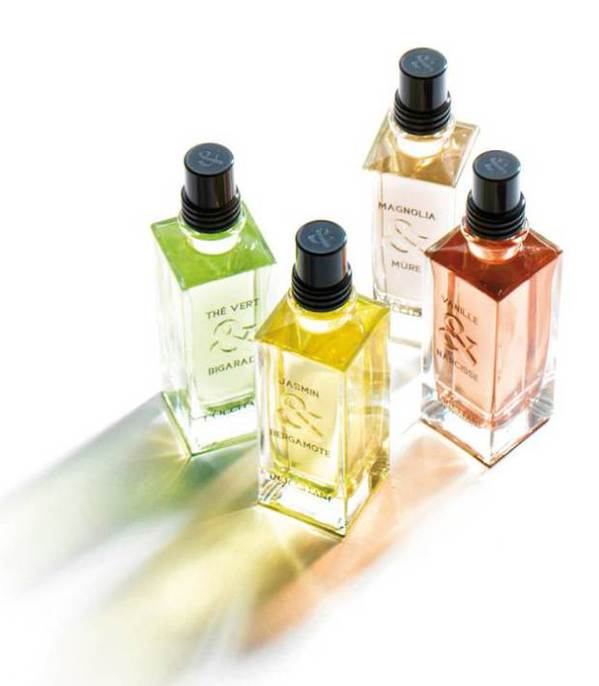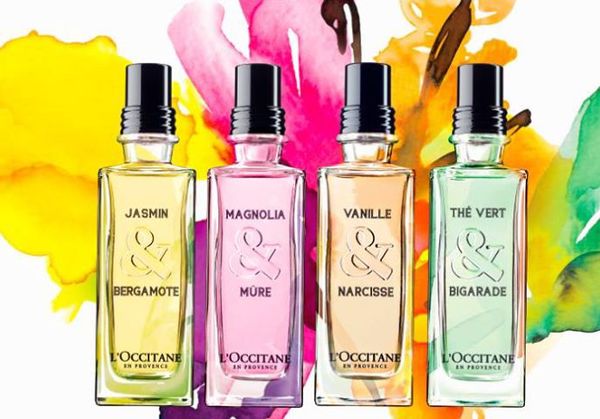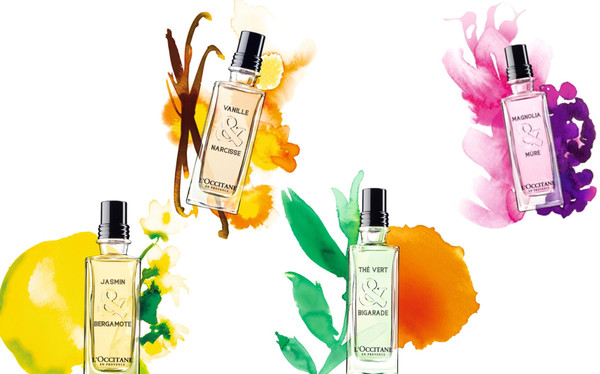L'Occitane Magnolia & Mûre, Thé Vert & Bigarade, Jasmin & Bergamote and Vanille & Narcisse in La Collection de Grasse (2013): An Homage to Old-School Perfumery & Invention {Perfume Reviews & Musings}
La Collection de Grasse is a new library of four scents by l'Occitane inspired by the birthplace of modern perfumery, Grasse in the south of France. While Paris is the fashion and style inspiration for the perfume industry, Grasse is its raw-material purveyor, naturals-and-synthetics-savvy component. It is also the debut collection by new in-house perfumer Karine Dubreuil, herself a native of the region educated at the Roure school of perfumery. She previously created 4 Reines, Eau des Baux et Myrte for the house.
With these four new fragrances called after two main perfumery ingredients each Magnolia & Mûre, Thé Vert et Bigarade, Jasmin et Bergamote and Vanille et Narcisse, l'Occitane reveal a new level of creativity rather than just a showcasing of qualitative materials...
Magnolia & Mûre
This is a lovely, light floral chypre which is surprisingly elegant in its signature although to make it last, you need to reapply. The central accord is very well done and nearly poetic evoking peachy watercolor flowers with a hint of green and cream as well as woods. The drydown smells of pretty, lady-like musk or "glow", and hot sand. A bit light but quite ravishing while the impression lasts. The infusion of blackberry makes for a very realistic note of the fruit. Its impressionistic quality makes you think of the Nympheas by Monet.
Notes: bergamot, infusion of blackberry from the south of France, magnolia essential oil from the Far-East, rose, patchouli, moss.
Vanille & Narcisse
This is the star of the lineup in our view. The perfume starts out dare we say again, surprisingly, like a revenant from the 1910s-1930s. It smells uncannily like an old-school perfume and a Caron fragrance at that to be more exact. In it you find the spirit of Narcisse Noir by Caron (1911) both carefully preserved like a museum object tenderly looked after by a conservationist and revisited at the same time by an inventive mind with slightly more tender and sweeter accents brought on by one of the two title ingredients, vanilla. A note of spicy carnation creates this sense of time-travel together with discreet touches of medicinal charm à la Heure Bleue de Guerlain (1912). There is also the fleeting sensation that Habanita by Molinard (1921) has been added to the mix, precisely for this iconic vanillic pendant to the narcissus one of Narcisse Noir by Caron, which also makes use of orange blossom. The drydown is one of fantasy, smelling of very, even ultra bitter almond milk, to the point of suggesting the poisoned, Cyanide-laced apple that Snow-White bit into. This creates a sense of danger within the story told by the perfume. In the end, this is a very lovely Oriental perfume, respectful of tradition while reinventing it by updating it for new mores and functions thanks to its lighter texture and hybrid personality. A must-try for fragrance lovers who appreciate the history of perfumery. Upon further reflection, one can say that Vanille et Narcisse is a very intriguing composition: complex, brainy, and even a bit angry.
Notes: Madagascar vanilla absolute, Narcissus absolute from France plus blackcurrant, bergamot, gardenia, tonka bean.
Jasmin et Bergamote
The perfume opens on watery jasmine with a note of banana followed by candy-sweet citrusy accents of bergamot. There is a constant basis of softness which is upset for a time by the bright note of fruity citrus. The vanilla is white, creamy, and pervasive. The jasmine tends to emerge only after a while. It is light, slightly animalic, realistic, a bit sweeter than in real life, with a hint of tea. There is a carefully crafted discreet note of dissonance smelling of clove/carnation/orange blossom which is again a throwback to old-school perfumery albeit supported by a lighter scent texture, one not lacking in depth. It now smells of both hay and leather which is actually traceable to the note of cedar wood which acts as a quirky note. As the composition dries down, Jasmin et Bergamote now manages to smell like green maté. The drydown is complex, a fact which is rare enough nowedays to be worth taking note of.
Notes: jasmine absolutes from Grasse and Egypt, bergamot essential oil from Italy, mandarin orange, bergamot, lemon leaves, sandalwood and cedar wood.
Thé Vert et Bigarade
Next to Vanille et Narcisse, this is the perfume with the most presence. It is the one most skewed unisex-masculine too. The opening stage of the fragrance is both very fruity and cologney - with hints of floating herbs - while adopting a surprisingly deep texture for the genre in which white amber and clovey accents mingle. It takes the green tea theme and pairs it with a very classic accord of cologne suggestive of lavender-scented fougère too. It is bracing, fresh, but also fruity and round. Minty, aromatic accents add character to the mix. Here again, the base betrays an old-school feel, like an homage to an early Germaine Cellier and an era which knew how to make use of aromatic notes - thyme here - for a leathery effect and to add character to a perfume.
Notes: bitter orange, green tea, cedar wood, thyme and musk.
The Style of Perfumer Karine Dubreuil
Judging from the Collection de Grasse, new in-house perfumer Karine Dubreuil is a young nose to watch and will certainly be an asset to the house. She seems to favor complex story lines, does not seem to like to be bored herself and manages to create surprising twists within classically-pitched compositions. She gives the impression of having a brilliant perfumer mind. She knows her classics and clearly feels reverence for some of the great perfumery works of the past succeeding in revisiting masterpieces while making them part of a new scenario for today. It appears that her presence might encourage l'Occitane to veer away from their toiletry propensities which can become a bit generic at times. For perfume lovers who might have thought that l'Occitane perfumes are refreshing but not necessarily exciting, this new arrival invites us to reconsider what the l'Occitane label is capable of launching.
More generally speaking, one is encouraged to think that a well-chosen in-house perfumer amps up the creativity of a house and will create new following once people become aware that the principal nose is not just a technician but a creator who is imprinting a house with a personal signature and a higher set of standards. Thanks to this type of tenure, they are also able to take a longer view of things and be judged on the longer term, hence are more capable of taking artistic risks.












